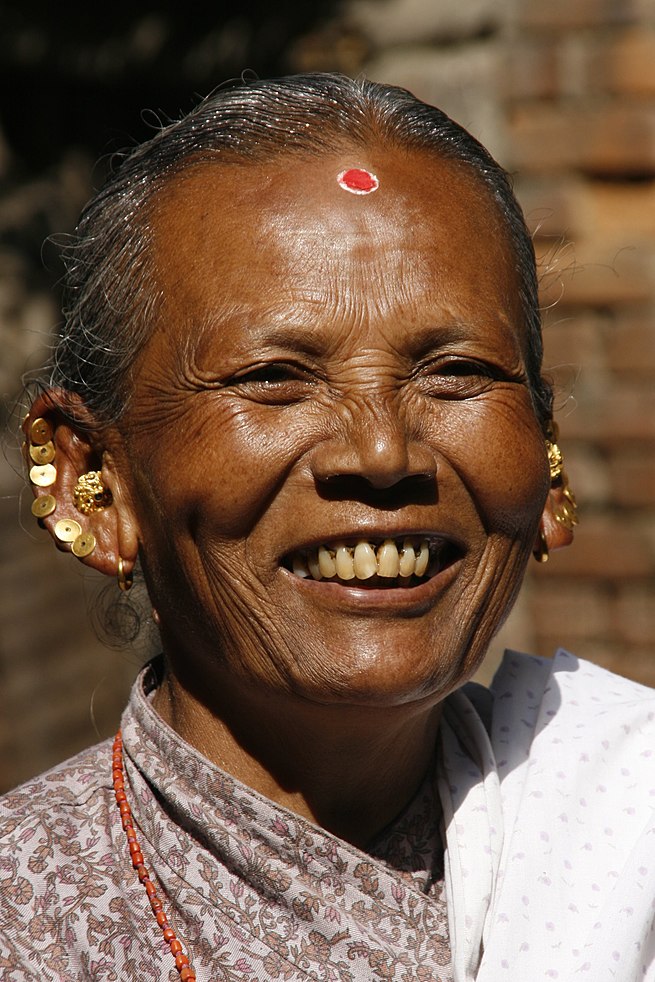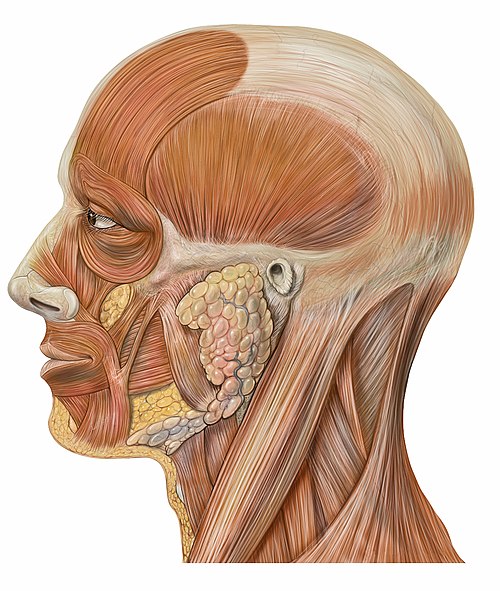Smilenoun
A facial expression comprised by flexing the muscles of both ends of one's mouth, often showing the front teeth, without vocalisation, and in humans is a common involuntary or voluntary expression of happiness, pleasure, amusement or anxiety.
Smileverb
(ambitransitive) To have (a smile) on one's face.
Smileverb
(transitive) To express by smiling.
Smileverb
(intransitive) To express amusement, pleasure, or love and kindness.
Smileverb
(intransitive) To look cheerful and joyous; to have an appearance suited to excite joy.
Smileverb
(intransitive) To be propitious or favourable; to countenance.
Smileverb
To express amusement, pleasure, moderate joy, or love and kindness, by the features of the face; to laugh silently.
Smileverb
To express slight contempt by a look implying sarcasm or pity; to sneer.
Smileverb
To look gay and joyous; to have an appearance suited to excite joy; as, smiling spring; smiling plenty.
Smileverb
To be propitious or favorable; to favor; to countenance; - often with on; as, to smile on one's labors.
Smileverb
To express by a smile; as, to smile consent; to smile a welcome to visitors.
Smileverb
To affect in a certain way with a smile.
Smilenoun
The act of smiling; a peculiar change or brightening of the face, which expresses pleasure, moderate joy, mirth, approbation, or kindness; - opposed to frown.
Smilenoun
A somewhat similar expression of countenance, indicative of satisfaction combined with malevolent feelings, as contempt, scorn, etc; as, a scornful smile.
Smilenoun
Favor; countenance; propitiousness; as, the smiles of Providence.
Smilenoun
Gay or joyous appearance; as, the smiles of spring.
Smilenoun
a facial expression characterized by turning up the corners of the mouth; usually shows pleasure or amusement
Smileverb
change one's facial expression by spreading the lips, often to signal pleasure
Smileverb
express with a smile;
Smile
A smile is formed primarily by flexing the muscles at the sides of the mouth. Some smiles include a contraction of the muscles at the corner of the eyes, an action known as a Duchenne smile.
Frownnoun
A facial expression in which the eyebrows are brought together, and the forehead is wrinkled, usually indicating displeasure, sadness or worry, or less often confusion or concentration.
Frownnoun
A facial expression in which the corners of the mouth are pointed down.
Frownverb
(intransitive) To have a frown on one's face.
Frownverb
To manifest displeasure or disapprobation; to look with disfavour or threateningly.
Frownverb
(transitive) To repress or repel by expressing displeasure or disapproval; to rebuke with a look.
Frownverb
(transitive) To communicate by frowning.
Frownverb
To contract the brow in displeasure, severity, or sternness; to scowl; to put on a stern, grim, or surly look.
Frownverb
To manifest displeasure or disapprobation; to look with disfavor or threateningly; to lower; as, polite society frowns upon rudeness.
Frownverb
To repress or repel by expressing displeasure or disapproval; to rebuke with a look; as, frown the impudent fellow into silence.
Frownnoun
A wrinkling of the face in displeasure, rebuke, etc.; a sour, severe, or stern look; a scowl.
Frownnoun
Any expression of displeasure; as, the frowns of Providence; the frowns of Fortune.
Frownnoun
a facial expression of dislike or displeasure
Frownverb
look angry or sullen, wrinkle one's forehead, as if to signal disapproval
Frown
A frown (also known as a scowl) is a facial expression in which the eyebrows are brought together, and the forehead is wrinkled, usually indicating displeasure, sadness or worry, or less often confusion or concentration. The appearance of a frown varies by culture.
















